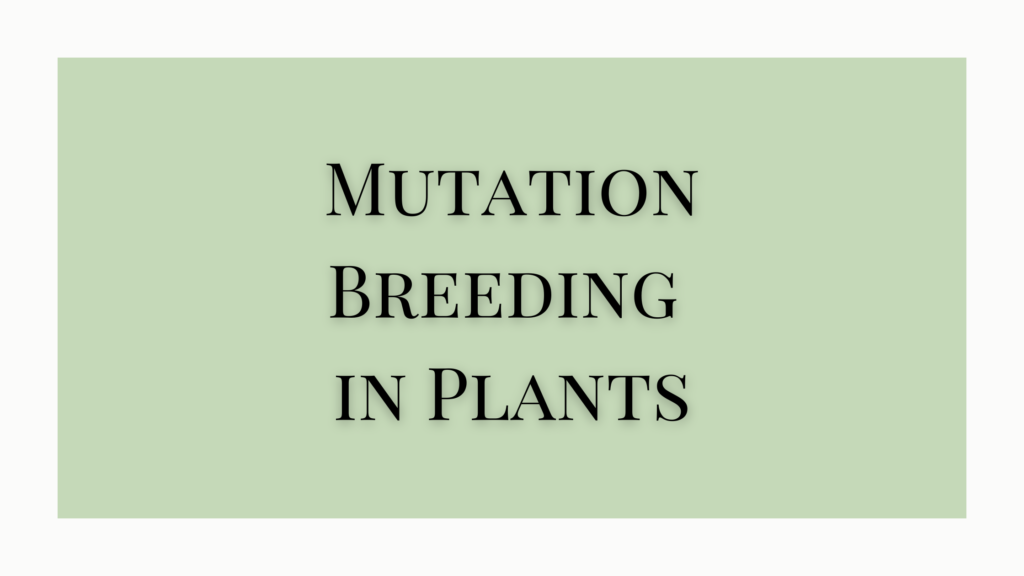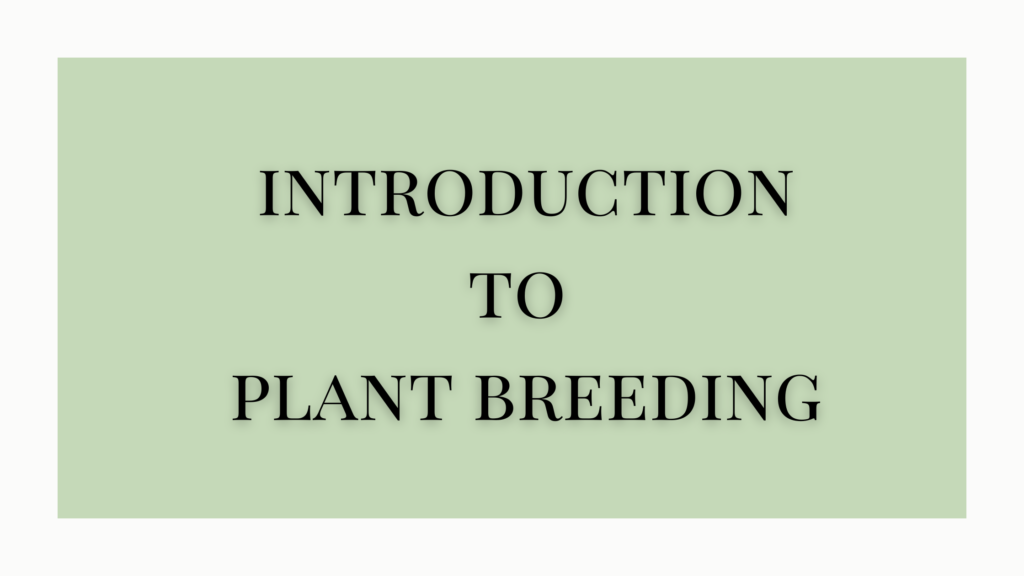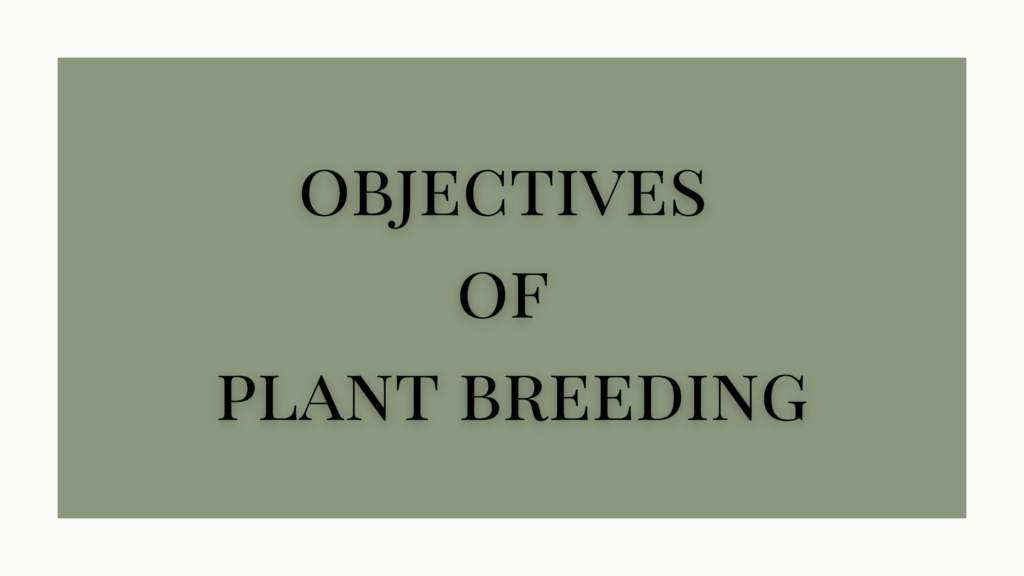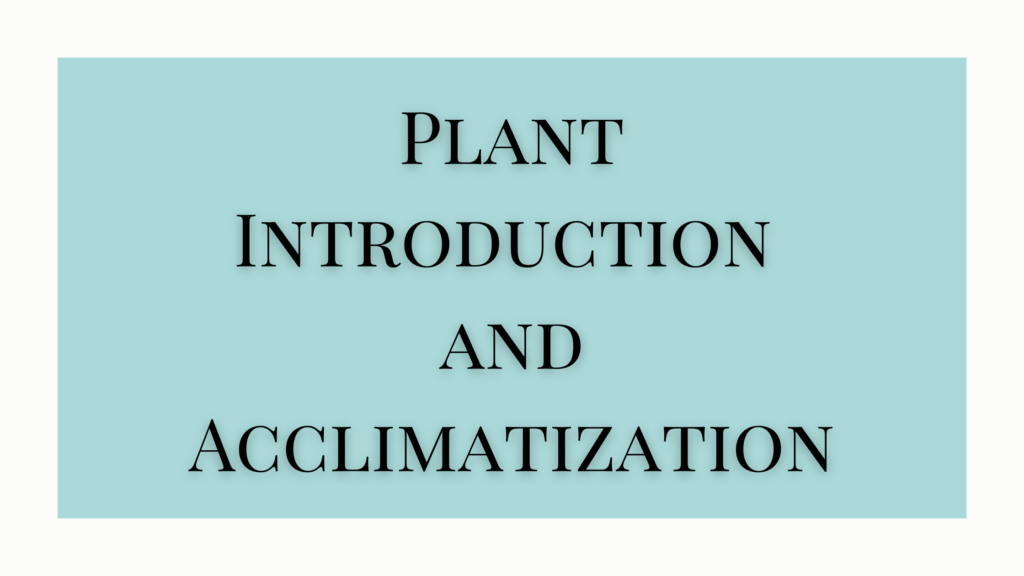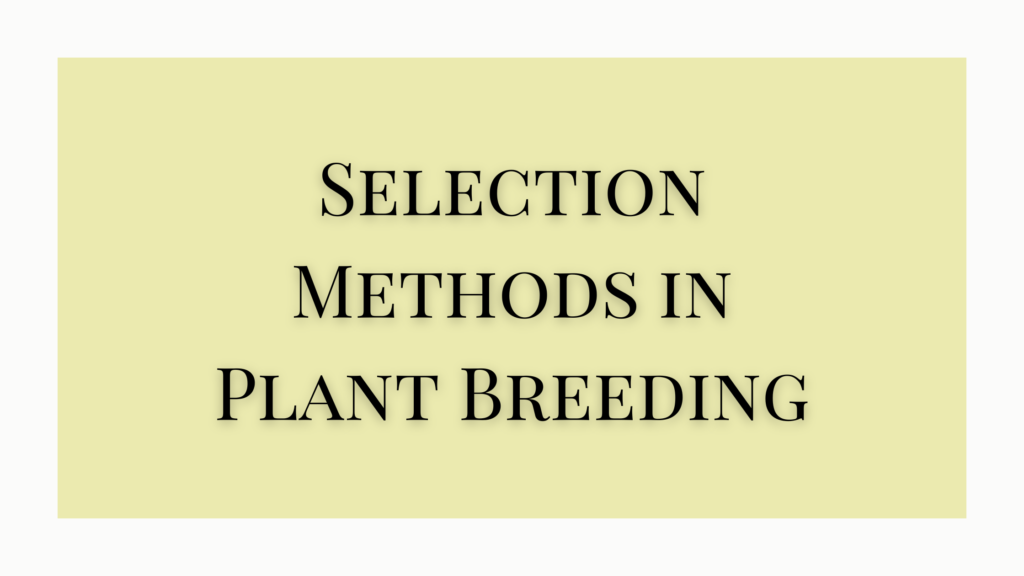Mutation refers to the sudden change in the genetic combination which is heritable but not caused by recombination and segregation. It often happens due to the presence of external factors. These factors that induce mutation are called mutagens and the organism that is affected is called a mutant. This concept of mutation breeding in plants is used to produce better-quality plants.
The term mutation was introduced by Hugo De Vries (1900). However, mutations were known to occur in animals and plants much before that. Mutation breeding attracted considerable attention during the 1950s and 1960s when several countries took up research projects in this field.
Mutation has many important good qualities in plants. It can be used in changing genotypes and thus phenotypes of plants to produce strains of different desired characteristics.
Mutation Breeding in Plants
Mutation is an unexpected heritable change happening in the characteristics of an organism. It could be a result of a change in a gene, or chromosome, that involves several genes or a change in plasma gene (genes in the cytoplasm) in the chloroplast, deletion, duplication, and inversions are called gene mutations) changes in chromosome structure are called chromosomal mutations.
- When the change is extranuclear it is called cytoplasmic mutations.
- Another term, somatic mutation is used to denote mutations occurring in buds or somatic tissues which are used for propagation. Eg. Clonal crops.
- Mutation occurs in natural populations (without any treatment) at a low rate, these are called spontaneous mutations.
- Mutations that are artificially induced are called induced mutations and agents used for producing them are called mutagens.
Induced Mutation and Mutation Breeding
The utilization of induced mutations for crop improvement is called mutation breeding. In other words, mutation breeding can be defined as the direct use of mutants in cultivation by refining and fixing them.
Mutagens may be of different kinds of radiations like alpha and beta rays, fast neutrons, gamma rays, ultraviolet rays, ex-rays, etc are thermal neutrons or certain chemicals such as nitroso compounds, S-mustards, N-mustards, sulfates and sulfonates, hydroxylamine, nitrous acid, etc. Of these x-rays, gamma rays, fast neutrons, sulfonates, etc are commonly used in mutation breeding.
Treating a biological material with a mutagen to induce mutation is called mutagenesis. Exposure of a biological material to one of the radiations (x-rays, gamma rays) is called irradiation. Irradiation helps improve characteristics such as disease resistance, higher yield, effects due to climate change, shorter cultivation time, etc.
A mutation breeding program is planned. Various ways are as follows.
History of Mutation Breeding in Plants
The history of mutation breeding in India can be traced back to 1935, the first gamma garden in India was installed in Calcutta at Bose’s Research Institute (BRI) in 1959. Another one has also been established at Bhabha Atomic Research Centre Trombay.
Objectives of Mutation Breeding in Plants
A mutation breeding program should have a well-defined and clearer objective.
Selections of variety for mutagen treatment
Generally, the best available variety of the crop is selected for mutagenesis. Mutants have to be used in hybridization programs for transferring mutant characters to a superior variety.
Part of the plant to be treated
Seeds, pollen grains of vegetative propagules like buds, cuttings, etc, may be used for mutagenesis. The plant part used for mutagen treatment depends primarily on whether the crop is sexually or asexually propagated and on the mutagen to be used. In sexually propagated crops, seeds are the most commonly used part of the plant in the case of clonal crops buds or cuttings are used for mutagenesis.
Dose of mutagens
Mutagen treatment when done the right way helps reduce the germination of seeds, growth rate vigor, and the fertility of the plant. There is considerable killing of plants during various stages of development after mutagen treatment thus survival is reduced considerably. Mutagens induce a high frequency of chromosomal changes and irregularities in both mitosis and meiosis.
An optimum (most favorable) dose is the one that produces a maximum frequency of mutations and causes minimum killing. In treated individuals, an under dose would produce too free mutations.
The dose of mutagen varied by varying the intensity or treatment time. In the case of radiation, a change in the radiation sources or the distance from the radiation source. The intensity of chemical mutagens may be varied by changing the concentration of mutagens.
Giving the mutagen treatment
The selected plant part is treated with the desired mutagen dose. In case of irradiation, plant parts are immediately planted to raise M1 plants (Mutant 1) from them. In the case of chemical mutagens seeds that are soaked for a few hours are washed properly to remove mutagens present in seeds and planted immediately to raise the M1 generation.
Handling of mutagen-treated population
Treatment of seeds and vegetative propagules usually leads to the formation of chimeras. A chimera is an individual with one genotype in some parts and another in others. In sexually reproducing species only internal chimera will be transmitted to the next generation.
In sexually reproducing crops mutation breeding utilizes both recessive and dominant mutations. Moreover, excellent opportunities exist for mutation breeding for polygenic traits (polygenes are small and have a cumulative effect, expression is greatly affected by environment, and they govern quantitative traits such as height, length, weight, etc. Mutant varieties are cultivated for yield traits up to M5 to M9. Outstanding progenies are released for general cultivation as new varieties.
A Gamma garden is an area subjected to gamma radiation. Thick high walls enclose this area to protect plants and animals outside of this from radiation. The purpose of gamma gardens is to irradiate whole plants in different stages of growth and for varying durations. Breeders at various institutions generally get their materials irradiated from gamma gardens.
A large number of varieties of plants have been programmed in different countries of the world. These varieties represent an improvement in allogeneic and polygenic characteristics. These crop varieties belong to diploid polyploid sexually reproducing species and clonal crops.
The first variety developed from mutagenesis programs was Primax while mustard was released in 1950 followed by Regina II Brassic comprestris in 1953. The Swedish Seed Association developed both varieties.
Applications of Mutation Breeding in Plants
Mutation breeding has been used to improve both oligogenic and polygenic characters. It helps improve morphological and physiological characteristics, disease resistance, and quantitative characteristics such as yielding ability. Various applications of mutation breeding may be summarised as given below.
- Induction of desirable mutant alleles which may not be present in germplasm or which may be present but may not be available to the breeder due to some political or geographical reasons.
- Mutation breeding helps improve specific characteristics such as adaptability and high-yielding. This is particularly seen in the case of clonal crops due to their highly heterozygous nature. In such cases, mutagenesis is the only method available to improve specific characteristics of clones without changing genetic makeup.
- Mutation breeding has been successfully used to improve various quantitative characteristics including yield.
- F1 hybrids from intervarietal crosses may be treated with mutagens to increase their genetic variability. Here, it is enabled by inducing mutations that facilitate recombination.
Irradiation of interspecific or distant hybrids (intergeneric) has been done to produce translocations. This is done to transfer a chromosome segment carrying a desirable gene from an alien chromosome to the chromosome of a cultivated species.
Role of Mutation in Plant Breeding
More than 337 varieties have been produced through mutagenesis programs in different countries. Mutant varieties have been developed in oil seed, pulses, millet, vegetables, fruit trees, sugarcane, cereals, etc.
However, wheat, rice, and barley account for 50% of mutant varieties. In all the crops (wheat altogether 31, barley 65, and rice has 68 varieties) these varieties represent improvement in poly and oligogeneic characteristics.
These crops may be diploid and polyploid which are sexually reproducing and clonals. The first variety by mutagenesis program was primax white mustard (Brassica hista, 1950) followed by B.compestris. They represent a small but consistent yield and oil content over parents and it took 10-13 years to develop them (by SSA).
Mutagenesis in India started in the 1930s on a small scale but received attention during the 1950s and 1960s. Dr. Swaminathan is a leading Indian cytogensist and pioneer in breeding under whose guidance mutation was done at IARI (Indian Agricultural Research Institute) New Delhi. He is known as the Father of the Green Revolution in India.
He introduced sharbathi sonora 64, a semi-dwarf wheat variety from the Mexican variety, by gamma irradiation at IARI. This wheat variety showed grains having red color and good taste were palatable to Indian consumers. But through mutation breeding, he isolated an amber-grained more palatable variety, which he named Sharbati Sonora 64. This was a stepping stone to the Green Revolution.
- CO449 is an important sugar cane variety that is a mutant resistant to red rot disease.
- NP836, an awned wheat variety from awnless variety.
- NP779 by gamma radiation at IARI New Delhi.
- Indore cotton, JR0514- jute (Corchorus sativus), Jagannath rice, CO8152 and CO8153 sugarcane, etc are other examples.
These examples show the usefulness of mutagenesis in changing a single characteristic in a desirable variety.
Mutation in Rice Crops
Jagannath rice is a gamma rays-induced semi-dwarf mutant from the tall cultivar T141. It has a higher yielding ability and is more responsive to fertilizer application than the parent variety. Rive variety CRM 13-324 was developed through mutagenesis, it has reduced height and days of maturity, and increased yield when compared to the parent. Jute variety JR03690 is an example of mutagenesis produced by crossing low-yielding mutants of Corcorus oletorius.
Prabhavathi variety of rice is an induced mutant from the tall variety Ambemohar which was treated with 0.2% EMS (Ethyl Methyl Sulfate). Prabhavathi is semi-dwarf non-logging and responsive to fertilizer and nitrogen applications.
The work of Ramayya and Parthasarthi on rice at Coimbatore deserves special mention. They obtained a large number of mutations by the application of X-rays on rice. This showed slight improvement and vigor, a difference in height, and a reduction in the maturation period.
Role of Mutation in Other Crops
The sugarcane variety is a gamma-ray mutant from CO527, CO8152 gives a 40% higher cane yield than the parent variety.
Three mutant cotton varieties were released from the Centre for Commercial Cultivation, two of these were developed through induced mutations- MCU -7 and MCU10, while one is a spontaneous mutant- DB 3-12. MCU-7 was isolated from culture 1143EE. It is early maturing (140 days) has medium staple length and is suitable for cultivation in Tamil Nadu.
MCU-10 is a mutant from MCU-4 induced by gamma-rays, it performs better than the parent variety under rainfed conditions. DB 3-12 is a spontaneous mutant that is a better plant type and matures 20 days earlier than the parent variety.
According to an estimate about 94% of mutant varieties developed till 1982 were developed from treatments with physical mutagens about 5% through chemical mutagenesis and the remaining 1% through a combined treatment with both physical and chemical mutagens.
Furthermore, a much higher proportion of mutant variety owes to physical mutagenes in asexually propagated crops than sexually reproducing ones. This may not reflect the greater effectiveness of physical over chemical mutagens. It may simply be related to the easier availability of the former resulting in its much more extensive applications.
In recent years, this line of investigation has been obtained from radium treatment. In Barley, Datura, Lilium, and crops like sugar cane, potato, tobacco, fruit trees, etc.
References
Additional Reading
- What is Hybridization in Plant Breeding?
- Heterosis in Plant Breeding & Its Causes
- Polyploidy Breeding
- Disease resistance breeding
